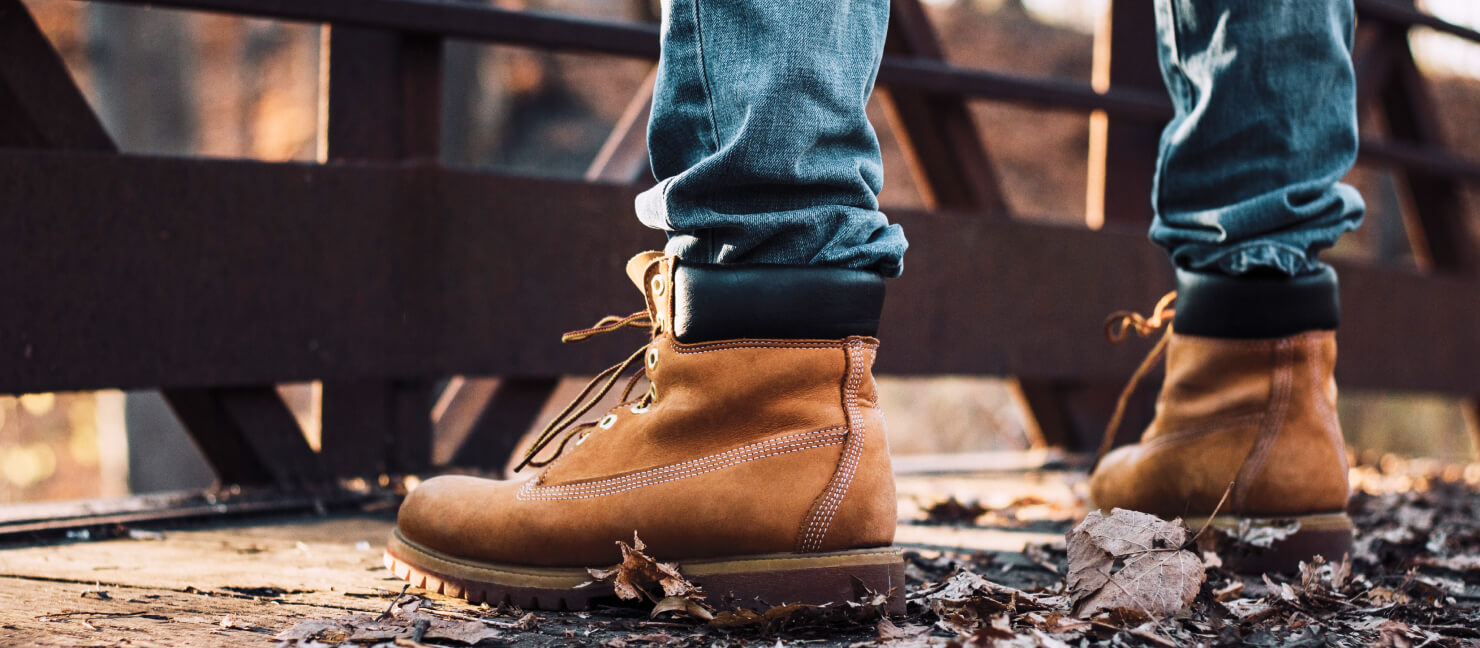
The right boots can make or break your comfort and safety on the job. Whether you're gearing up for a rugged day on the construction site or preparing for long hours at a workshop or farm, a pair of comfy boots is crucial. Academy teamed up with Justin Boots to create a top-notch guide. We will walk you through everything you need to know about breaking in your new work boots.
Key Takeaways
- Finding Work Boots That Fit: The end of the day is the best time to measure your feet because feet expand or swell throughout the day while standing and walking. Wear your work socks while trying on a new pair of boots as well.
- How Long Does It Take to Break in Work Boots? It usually takes a couple of weeks. Leather boots take a bit longer and may require a leather conditioner to soften up. Start slow and gradually increase wear as they mold to your feet.
- Different Ways to Break in Your Boots: Wear your boots for 10 minutes a day and gradually increase the time. Manually flex and bend the boots, use conditioner or mink oil (for leather), or a boot stretcher to make them more comfortable.
- What You Shouldn't Do: If the boots are truly too tight, consider sizing up. Do not submerge the boots in water to soften them or apply direct heat to dry them.
- Common Break-In Challenges and Solutions: See our chart with quick solutions for heel slippage, tight spots, creasing, blisters, poor arch support, and stiffness.
- How to Avoid Blisters: Make sure the shoes have a spacious toe box and a snug heel to avoid rubbing. Try wool socks or foot powder to prevent moisture.
- Maintenance Post-Break-In: Regular cleaning, leather conditioning, and use of shoe trees to hold the shape of the boots are all ways to maintain their quality.
Finding Work Boots That Fit
Much like the rest of our bodies, our feet change over time. Measure your feet before buying new boots to get the most accurate size. Ideally, you should measure them later in the day when they've expanded to their largest size. Good boots should provide a snug, not tight, fit with plenty of room around the toes.
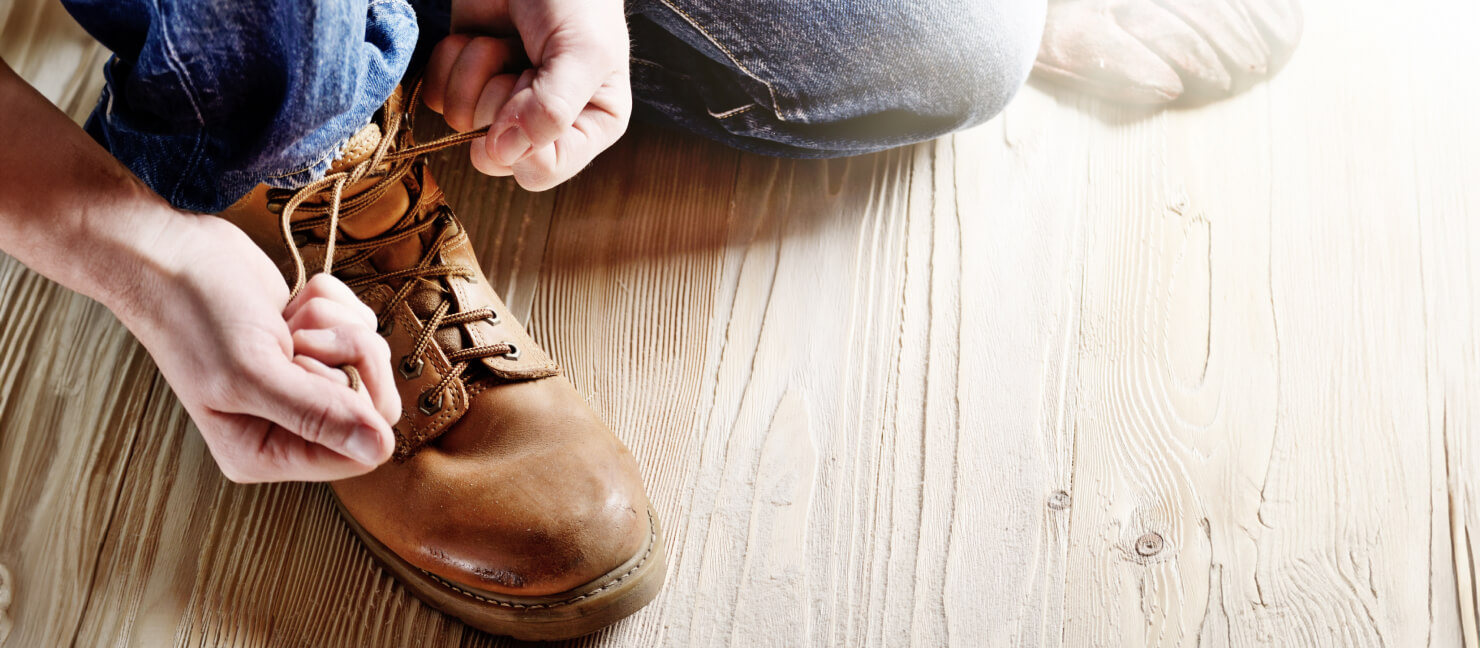
Here are a few tips to make sure you’re purchasing the right size:
-
Wear socks: The socks you wear during the fitting process are important. The thickness and material of your socks can significantly impact how your boots fit. We recommend wearing the socks you intend to pair with the boots.
-
Walk around: Once you have the boots on, take a walk around. Feel for any areas where the boot may pinch or allow your foot to slip. A well-fitting boot will offer immediate comfort. However, it's normal for them to break in and conform to your feet over time.
-
Feel for heel slip: Pay special attention to the heel. A bit of slip is expected in new boots but should not be excessive, as the boots should securely hold your heel in place as they break in.
-
Check for pressure points: Discomfort, blisters, or pressure points are strong indicators that the boots may not fit you. Remember, the proper work boots will support and protect your feet and enhance your comfort.
Choosing boots that fit correctly from the start is the first step toward long-term comfort and preventing foot problems down the line.
Expert Tip:
If your shoes never seem to fit comfortably, then your feet may need a wider size. Check for brands that carry wide sizes, such as ‘D’ for women or ‘EE’ for men.
How Long Does It Take to Break in Work Boots?
Breaking in a new pair of work boots generally takes a couple of weeks. Starting with just a few hours of wear each day and gradually increasing the duration helps the boots stretch and mold to the contours of your feet.
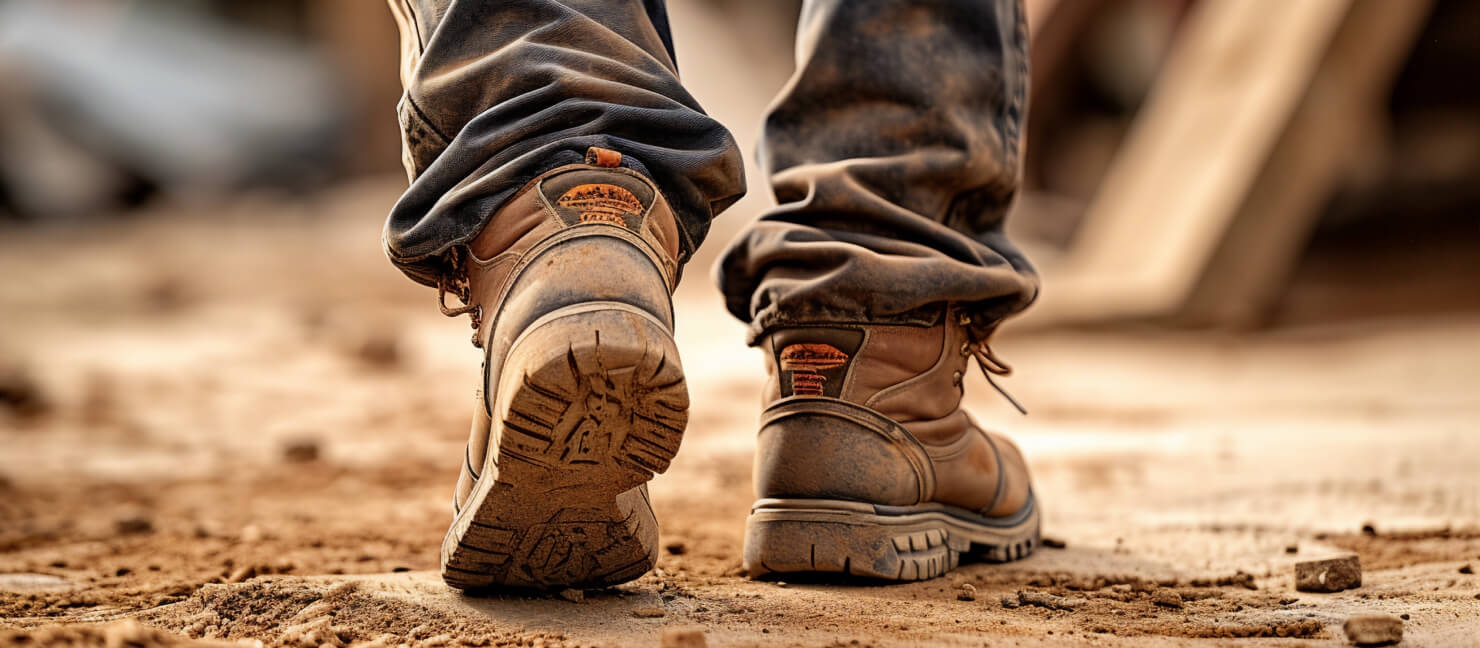
The type of material your boots are made from plays a significant role in the break-in
process. For example, leather boots often require more time to soften up than synthetic
boots. Leather conditioners and other products can speed up the softening process and
shorten the break-in period.
Patience is key during this time. Rushing into
wearing your boots for extended periods too soon may lead to discomfort. Always allow
your boots ample time to adapt to your feet for the most comfortable fit.
Breaking in Steel-Toe Boots
Steel-toe
boots often take more time to break in. The break-in period for these boots
typically ranges from a few weeks to a month, due to the rigid nature of the steel cap
and often thicker leather construction.
The time it takes to break in your
steel-toe boots depends on how often and how long you wear them every day. Consistent
daily wear will accelerate the break-in process, just be sure not to overdo it to avoid
any pain or discomfort.
Breaking in Composite-Toe Boots
Composite-toe boots tend to break in quicker than steel-toe boots, but they can still take 1 to 3 weeks to feel comfortable. These boots often use flexible and light materials, which help shorten the break-in period. The type of activity and amount of movement in your daily routine can influence the break-in time as well. More activity results in a faster break-in period.
Expert Tip:
It's normal to experience some discomfort when breaking in new boots, but persistent pain or pressure points should not be ignored. If you notice any areas of discomfort, take the time to address them with proper stretching and conditioning, or consider getting a larger size.
Different Ways to Break in Your Boots
Breaking in your new work boots ensures they provide the best fit, comfort, and support for your daily tasks. The break-in period requires patience and time. However, there are several methods you can use to make your boots more comfortable more quickly. Learn more about each of these techniques in detail below:
Walk Around at Home
Start the break-in process in the comfort of your home by wearing your boots briefly.
Start with 10 minutes daily and gradually extend the wearing time as your boots feel
more comfortable. Walking on various surfaces inside your home to replicate different
terrains can also help speed things along.
Exposing your shoes to different
terrains helps them adjust better to the shape and movement of your feet. Monitor how
the boots feel during these sessions, pay attention to improvements in fit, and identify
any remaining tight spots.
Bring Your Boots to Work
Once your boots have been slightly broken in from your at-home sessions, try bringing them to work. Initially, wear them for shorter segments of your workday and keep a spare pair of shoes handy in case you need to switch. Determine how they perform under actual work conditions and identify any areas that may need more breaking in.
Use Leather Conditioner or Mink Oil
For leather boots, find a leather conditioner or mink oil compatible with your boots' material, performing a spot test if necessary. Clean and dry your boots thoroughly before application. Follow the instructions to apply the product evenly and pay extra attention to flex points like the toe box and creases. This treatment will soften the leather, making it more comfortable to wear.
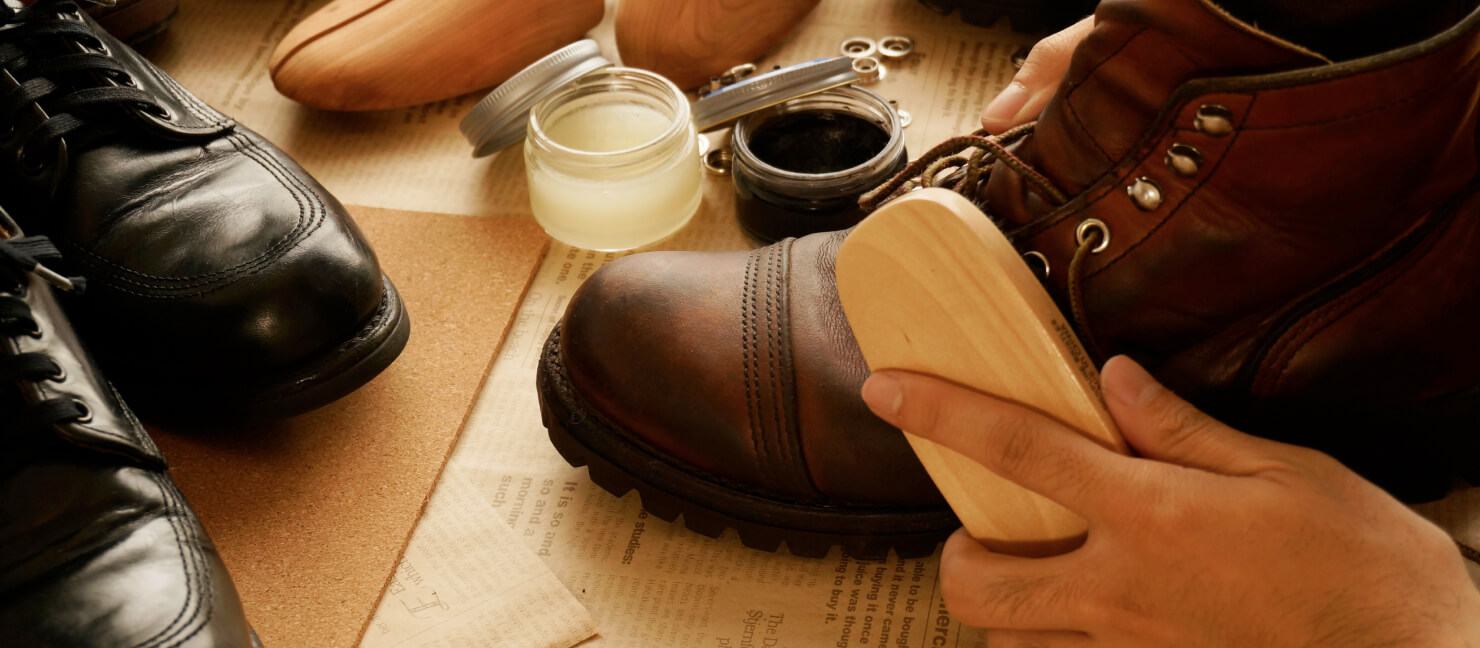
Use a Boot Stretcher
Using a boot stretcher or shoe tree can target areas that feel too tight. Choose a stretcher designed for your boot's dimensions. Put the stretcher into your boot and adjust it according to the manufacturer's directions. Leave it in for 24-48 hours to expand the material gently. Check the fit afterward and repeat if necessary, allowing time for the leather to stretch adequately.
Flexing and Bending the Boots
Before wearing your boots for the first time, manually flexing and bending them can ease stiffness. Focus on the toe box and natural bending points of the foot to mimic the movements your feet will make. This movement can soften the stiffest parts of the boot, making the initial wear more comfortable.
Professional Boot Stretching Services
Professional boot stretching services provided by cobblers or shoe repair shops can be a valuable resource for particularly stubborn boots. These experts can precisely target problematic areas and stretch the boots without causing damage.
What You Shouldn't Do
When shopping for new work boots, avoid common mistakes that could damage your boots. Never compromise on fit. Boots that are too tight, pinch, or create hot spots right out of the box are unlikely to ever become comfortable. These initial discomforts are indicators that the boots are not the right fit for your feet.
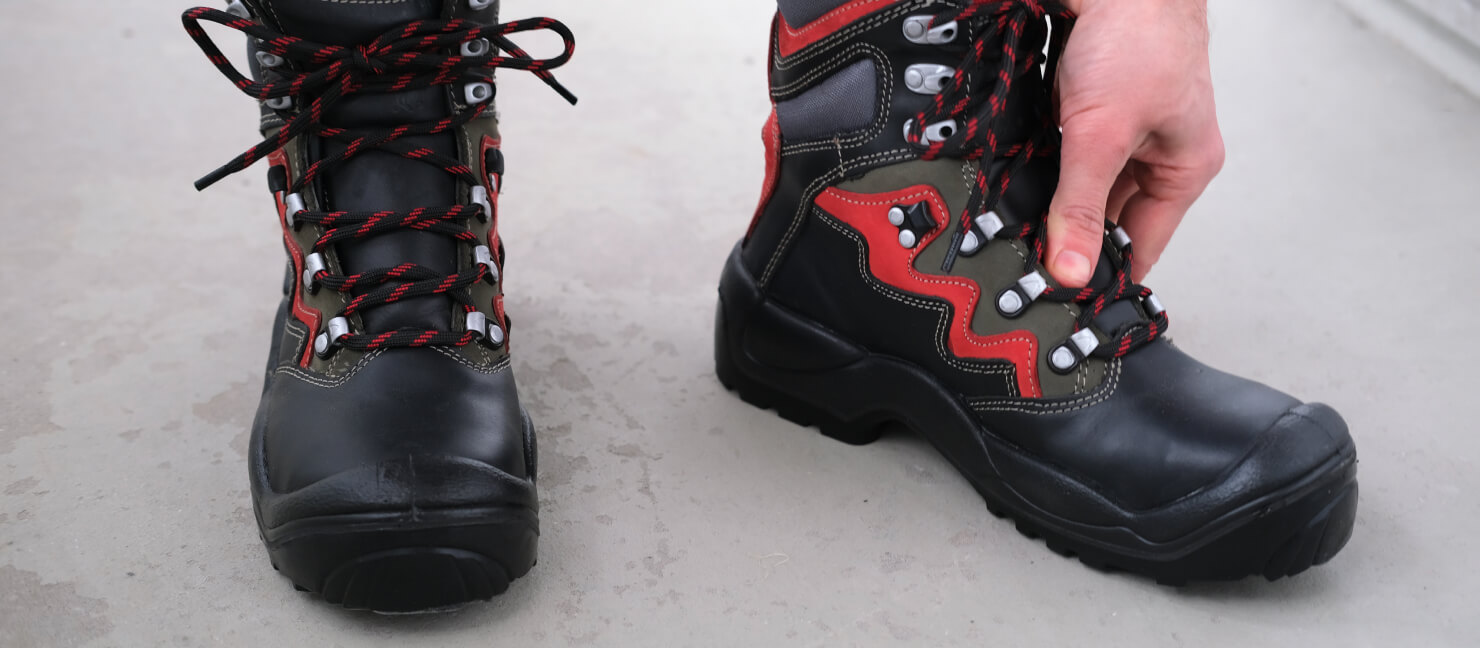
Additionally, avoid using quick-fix methods for breaking in your boots. Submerging your
boots in water might seem like a fast track to softening the leather. However, it's a
surefire way to cause warping and lasting damage. Similarly, applying direct heat with
hairdryers or ovens can dry out and crack the leather.
How you take off your
boots can also impact their longevity. If you have lace-up boots, take the time to
loosen the laces and remove your boots gently by hand. This extra step at the end of the
day preserves the shape and condition of your boots.
Common Break-In Challenges and Solutions
| Common Boot Break-in Challenges and Solutions | ||
|---|---|---|
| Break-in Challenge | Potential Solutions | |
| Heel Slippage |
|
|
| Tight Spots |
|
|
| Creasing |
|
|
| Blisters |
|
|
| Lack of Arch Support |
|
|
| Excessive Stiffness |
|
|
How to Avoid Blisters
Breaking in new boots can often be a double-edged sword. While you're working towards the
perfect fit, the risk of developing blisters can worsen the experience.
Starting
with the right fit is important to avoid blisters. Boots that hug your feet snugly
without being overly tight are less likely to cause friction that leads to blisters. An
ideal fit prevents too much foot movement inside the boot, a common issue behind blister
formation. Choose boots with enough room to avoid squishing your toes, as small spaces
can increase rubbing and pressure points.
The choice of socks
also helps prevent blisters. Using moisture-wicking materials such as wool or special
synthetic fibers can reduce the risk of blisters. Applying foot powder before putting on
socks can keep your feet dry and less prone to the softening that invites blisters.
Protective pads or blister prevention tape
can create a barrier that minimizes friction for areas of your feet particularly
vulnerable to blisters.
Incorporating custom insoles
or padding can dramatically improve the comfort and fit of your boots. These
insoles provide enhanced support and cushioning and can help evenly distribute pressure
across your foot. This combination of the right fit, socks, and moisture management can
help you get through the break-in period with minimal discomfort.
Maintenance Post-Break-In
After successfully breaking in your boots, maintaining them is key to ensuring their comfort and longevity. Regular cleaning to remove dirt and debris, followed by conditioning to keep the leather supple, is essential.

Conditioning
prevents the leather from drying out and cracking, which could compromise the fit and
comfort. Waterproofing
your boots can also protect them from moisture damage, especially if you frequently work
in wet conditions. Be sure to follow the manufacturer's instructions for the conditioner
you use.
Consider using shoe trees to maintain their shape and prevent creases
when storing your boots. Keeping them in a cool, dry place away from direct sunlight
helps prevent the materials from degrading over time. Adhering to these maintenance
practices will help you keep your boots comfortable and preserve them for years to come.
Expert Tip:
Allow your work boots to air dry naturally after each use, especially if they become wet or damp. Avoid placing them near direct heat sources, as this can damage the leather.
Have Fun Out There!
Tackle the workday with confidence. Find the perfect work boots for any job at Academy Sports + Outdoors. Our extensive collection features everything from durable steel-toe boots to comfortable, slip-resistant styles to keep your feet protected and comfortable no matter what the task is.
 Gift Cards
Gift Cards Big Fun Deals
Big Fun Deals Hot Deals
Hot Deals Clearance
Clearance

